Ghostly Appearances in the Newbery Conversation
I don’t normally seek out books with ghosts in them, but it’s impossible to avoid them this year. I’m not talking about the books where ghosts fit right in, like the axe-wielding sailor in DARK WATERS. Instead it’s those ghosts that play key roles in stories that are otherwise mostly realistic. We’ve posted previously about AMBER AND CLAY and ALMOST THERE AND ALMOST NOT. I don’t know why there are so many ghosts, but a lot of really good books have them. Here are three more excellent examples of the different ways in which authors utilize that ghostly device to help develop plots, characters, and themes that might move the books into Newbery contention.

DEAD WEDNESDAY by Jerry Spinneli
The ghost in this book kind of sneaks up on the reader. We know we’ll be looking at death from the title and the school-wide exercise that’s supposed to heighten safety awareness from eighth-graders like Worm. But then the dead teen he’s supposed to read about actually appears and spends the day with him. It takes a while for Worm to actually interact with the ghost of Becca, and longer for him (and her) to get some sense of why she’s there. As their relationship develops, it moves from ghost-human to boy-young woman, but it’s never fully one or the other. Like when Becca tries to talk Worm into sticking with her instead of watching a fight:
ADVERTISEMENT
ADVERTISEMENT
“So…you’d rather go see a fight than spend time with a spectral maiden – in other words, you want to walk away from what is probably the most unique experience in the history of humanity. Did I get any of that wrong?”
He’s smart enough to know when he’s walked into an answer trap. She’s got his head looped like a funnel cake.
p 95
For me, their unusual friendship is the strongest part of the book. Readers can see early on that there’s more to Worm than he gives himself credit for, and the way Becca brings out his deeper qualities is convincing. The subtle way that he connects the encouragement she give him with his confused feelings about Mean Monica is also nicely done. So is Worm’s realization that Becca needs his help as well.
The premise of the school’s “Dead Wednesday” tradition kind of fades in significance, and I wonder if it was necessary or more of a distraction. The interplay between Becca and Worm, and the way that shifts through the day and afterwards (for Worm) makes for a very engaging and thoughtful book.

OPHIE’S GHOSTS by Justina Ireland
In OPHIE’S GHOSTS, we learn about the title character’s abilities in that riveting prologue where the ghost of her father, who has just been murdered, appears to save the lives of Ophie and her mother. That part ends after the funeral, as they depart from Georgia:
She looked out the window. Standing in the front yard in his work clothes was her daddy. His hands were in his pockets, and he looked sad and wistful, and maybe a bit faded, like something had leeched most of the color from him. Ophie raised her hand to the glass, waving to him or reaching for him, she didn’t know.
But it didn’t matter, because her daddy raised one hand in return, smiled at her, and disappeared into sparkling sunlight.
I love you, Ophie. Be a good girl for your mama.
As the car pulled out of the yard and onto the road, Ophie fell back against the seat and let the tears she’d been holding back finally fall.
When she was twelve, Ophelia Harrison saw her first ghost.
And it was the last time she saw her father.
p 16 [ebook version]
This sets the stage for Ophie’s experiences in 1920s Pittsburgh, as she encounters numerous ghosts, gradually figures out how to manage her ability to see them, and gets deeply involved in the mystery of Clara’s life and death. This is an excellent ghost story: readers learn how the ghostly world works along with Ophie, and there’s just the right amount of eeriness coupled with emotional impact. It’s also a successful mystery. The Ophie-Clara relationship is fascinating: Ophie wants to learn what happened to Clara, while at the same time she has to figure out if Clara is a friend or an enemy, and readers are kept equally unsure.
It shines as historical fiction as well. Part of that comes from the strong characterizations, not just of Ophie herself, but of the people she interacts with. Through the begrudgingly charitable relatives, the Caruthers family, and Ophie’s mother, we get a strong sense of the attitudes of the times, while the chapters that introduce ghosts in different places (“The Trolley Car,” “The Garden,” etc.) help to flesh out the physical environment.
I revisited OPHIE’S GHOST for this post and am impressed all over again at how skillfully written this book is. A nomination possibility for me for sure.

TOO BRIGHT TO SEE by Kyle Lukoff
Like OPHIE’S GHOST, this book opens with the death of a close relative who appears right away as a ghost, but it’s less clear to the reader exactly how real the supernatural elements are. Bug is comfortable with the ghostly presences in the house, but it becomes clear that Uncle Roderick is a more tangible being, with a specific purpose:
It never seemed important to research the different presences in my house, any more than it felt necessary to learn about the different woods that made up the doors and the roof and the kitchen table. But that was before one of them tried to get my attention.
p 97-98
ADVERTISEMENT
ADVERTISEMENT
Bug investigates with library research and the ouija board, which is engaging, but also slyly takes the reader’s eye off of the self-exploration that Bug is going through. The slow revelation of Roderick’s message and Bug’s understanding of it works beautifully. Along with Bug, readers recall the incidents when the ghost’s actions were most powerful, and it all makes sense.
That applies beyond the supernatural parts, as well. The conversations with Moira and Bug’s confusion with getting to know Griffin also take on a different meaning once Bug figures things out. Bug’s tendency to self-narrate events in the third person works as an interesting and quirky character trait, but that too takes on a different when Bug finally decides that “it didn’t feel right” anymore (p 174).
Normally I don’t worry about giving away plot twists on Heavy Medal…we’re here for the writing, not the story. But I tried to avoid doing that with this book, because the author’s note at the end asks us to in such a thoughtful way. But also, the plot, characters, and especially “interpretation of the theme” are done in such an artful manner that I’m glad to avoid a spoiler for those who haven’t read the book yet.
Next up on my ghost-book list is R. J. Palacio’s PONY, and I’m eager to discover yet another approach to this 2021 trend. I have no idea why there are so many this year, but so far I’m enjoying and appreciating them much more than I thought I would…
Filed under: Book Discussion
About Steven Engelfried
Steven Engelfried was the Library Services Manager at the Wilsonville Public Library in Oregon until he retired in 2022 after 35 years as a full-time librarian. He served on the 2010 Newbery committee, chaired the 2013 Newbery Committee, and also served on the 2002 Caldecott committee. You can reach him at sengelfried@yahoo.com.
ADVERTISEMENT
ADVERTISEMENT
SLJ Blog Network
One Star Review, Guess Who? (#202)
Review of the Day: My Antarctica by G. Neri, ill. Corban Wilkin
Exclusive: Giant Magical Otters Invade New Hex Vet Graphic Novel | News
Parsing Religion in Public Schools
Take Five: LGBTQIA+ Middle Grade Novels
ADVERTISEMENT



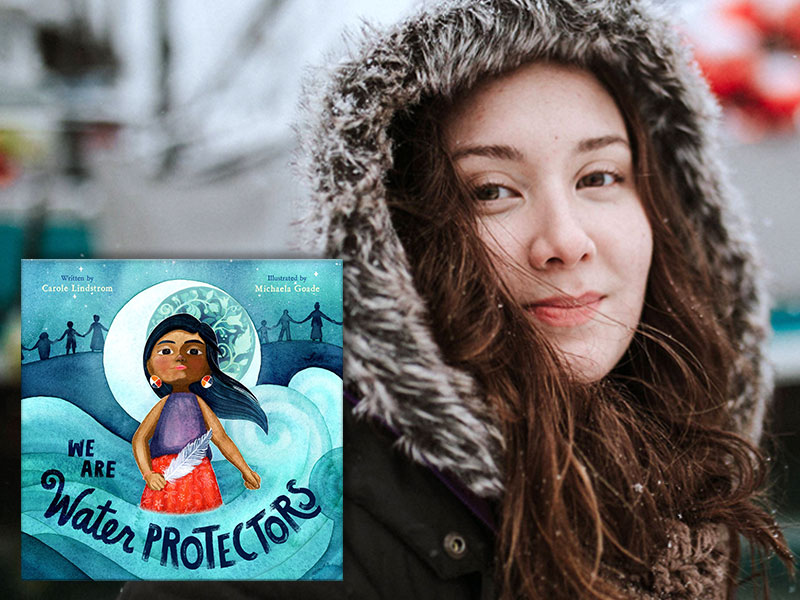
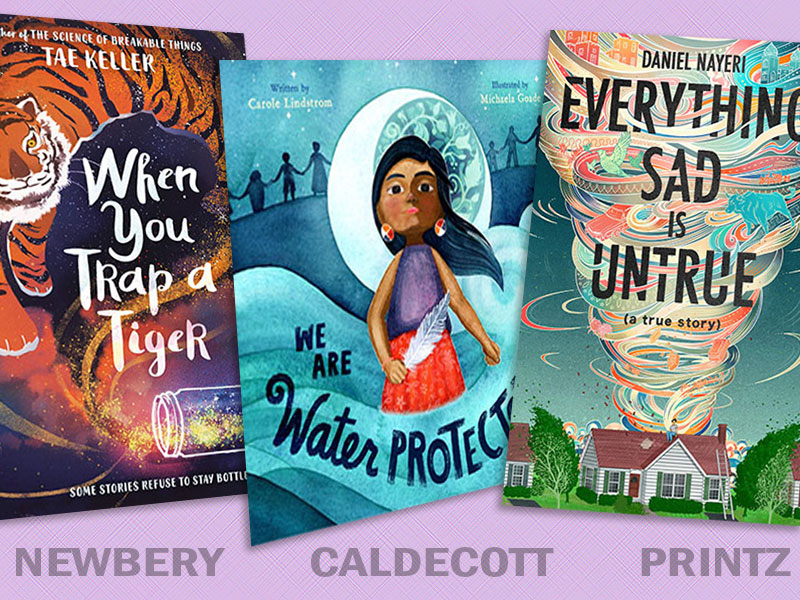
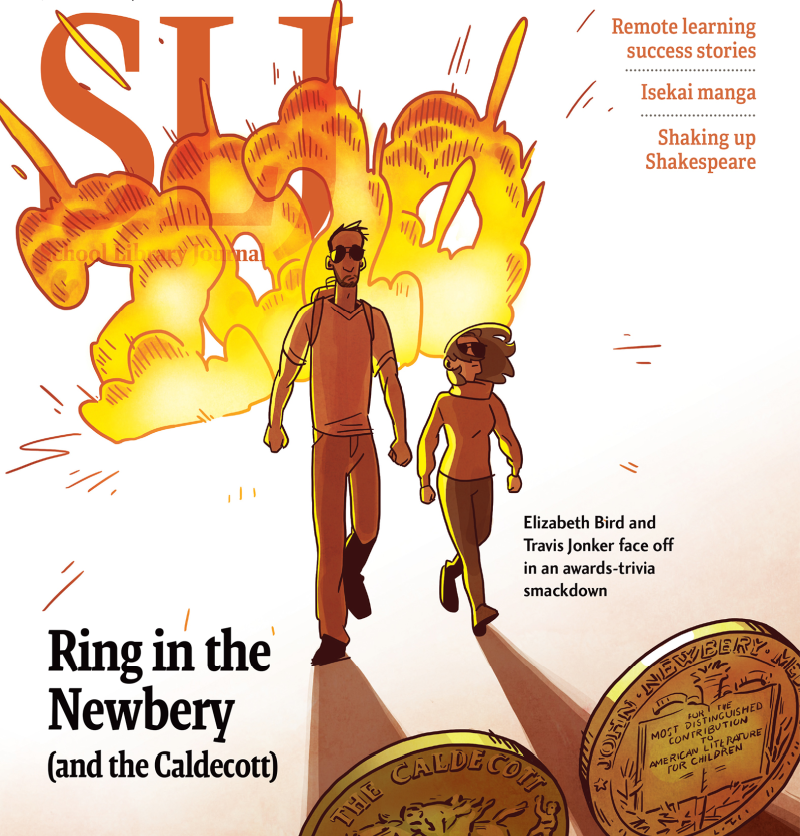
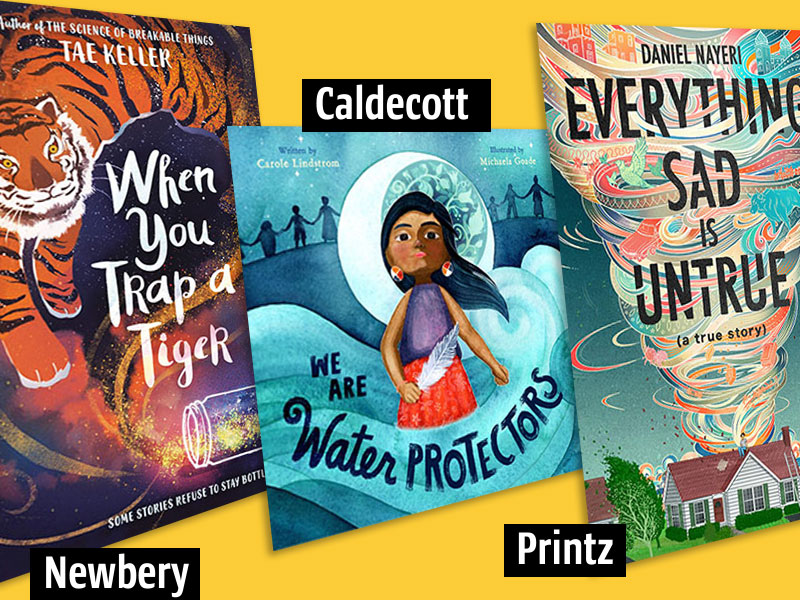
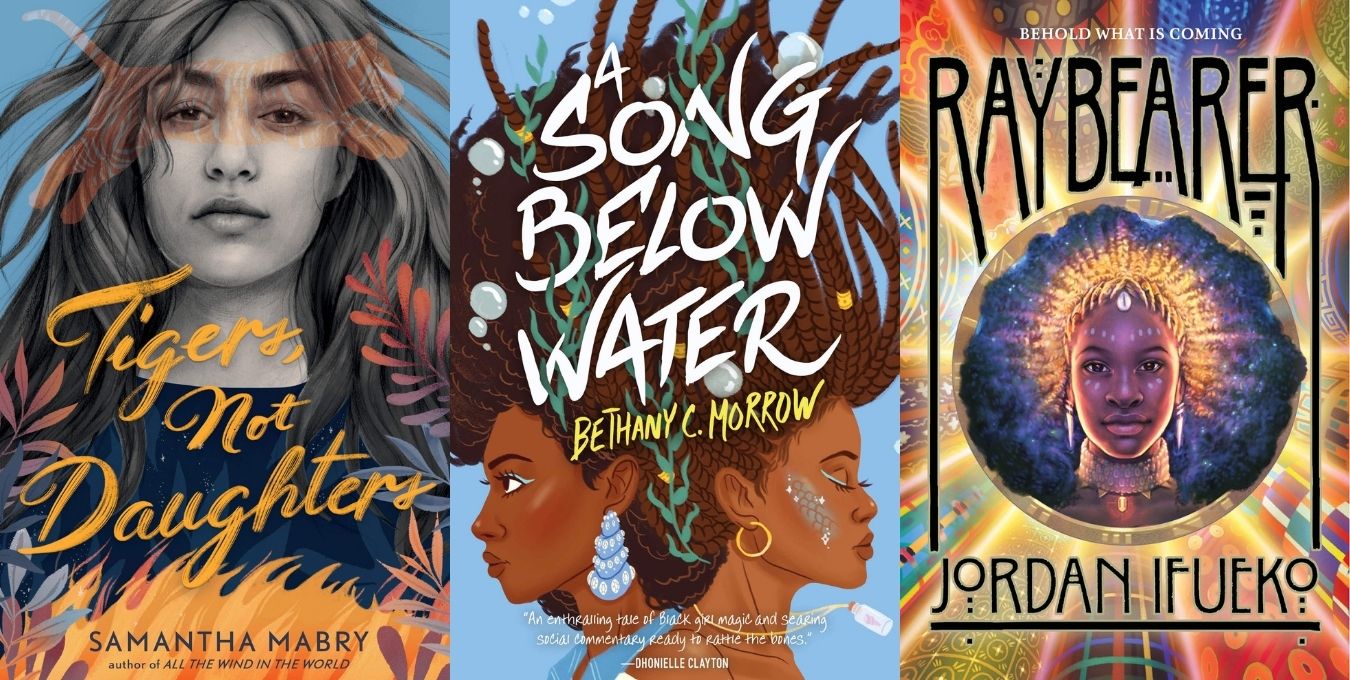
a rainy day in October… such an appropriate day for a spooky post Steven!
I haven’t read Dead Wednesday yet and it didn’t get nominated this month, so that’s slipped down on my priority pile
Ophie’s ghosts I read over a month ago and I’m STILL thinking about Ophie’s Ghosts… so that’s something. That first chapter is SUCH a draw-in. I also think Ireland did a phenomenal job with sense of setting, from Georgia to Pittsburgh to the aunt’s house to the garden to the train and the bus rides to the manor (and the attic and lady’s room and everything with it), you can picture everything so vividly! I struggled a little with the development of secondary characters… particularly Ophie’s mom and her lack of realization about some things? and Aunt Rose and why she didn’t offer Ophie more guidance with her power? overall VERY WELL DONE though. The balance of themes was well done– with thriller/ mystery combined with racial injustice and historical fiction… that’s a hard balance and Ireland did it well.
Too Bright to See… just didn’t stick with me very much. I’d love to hear more from the six people that nominated it!! I felt in a wake of a big loss Lukoff portrayed the grief… but it didn’t feel like ENOUGH grief. I’ll also try not to give away plot twists but it seemed like a lot of the big plot twist was forced, like the use of the ghost wasn’t totally necessary? and the change was underdone….(please disagree with me- I don’t mind being proven wrong)
BOO! (wait none of these ghosts say boo! bummer
Of the three books, TOO BRIGHT TO SEE is the one that might have worked without a supernatural element. But I like the way the author set it up. Since ghostly presences were already accepted, not just by Bug, but by Moira too, and later confirmed by Griffin too, the leap to a ghost who’s more active is not so great, but still impactful. And to me it made sense. If Uncle R. had lived, Bug would have had all of the support and encouragement needed to discover himself. Instead, Uncle R. died before he could help Bug, and he would have been the perfect person to do it. So hanging on and getting just enough of that message through seems like a ghost-y kind of reason.
I’m not sure about the change being underdone. Bug’s announcements to her mom, Moira, the principal, and the group of friends all went so smoothly. I hope that really could happen that way. But the turning point for Bug wasn’t the announcement, but the self-realization, and I thought the build-up and the presentation of that was very effective.
I think I didn’t mind the lack of depth in other characters in OPHIE because her own point of view is so strong. She’s dealing with ghosts and a mystery, and also a growing awareness of racism and of her own potential in her world. Other characters matter only as they interact with her. The scene where mother introduces Ophie to Mrs. Carruthers is perfect. She sees her mother with “her shoulders rounded and her eyes downcast. This was a version of her mother that Ophie had seen only a few times, usually when white folks were around.” Ophie has a different response, though, recognizing that “Mrs. Carruthers was a rattlesnake” and deciding that “there’d be no snakebites for Opie.” (p 32-33, ebook version) It’s Ophie’s perceptions that matter, and if the reactions of her mother and Mrs. C. are less deep and nuanced, that seems right for this story to me.
One of the things I appreciated about TOO BRIGHT TO SEE was the relationship between Bug and Moira. It was complicated, and allowed to be complicated. Moira was absolutely accepting and supportive of Bug, and then turned right around and they had a fight over long simmering resentments – just the way real friends at that age are by turns hugging you and shouting at you. I’ve read a lot of stories for that age group that navigate the rocky paths that friendships take in middle school, when the kid you’ve been besties with since kindergarten suddenly seems to have completely departed from your shared interests. A lot of those books end with getting new friends and moving on, whereas this one made the choice that they will stay strong friends, even though they are very different people.
I agree with Stephen that the change didn’t seem underdone to me – the emotional energy peak was in Bug’s self realization, involving other people was important, but not the climax of that plot thread. I also thought the author did a nice job by including all of the pamphlets and things, making it clear that not everyone is going to have the smooth, non-traumatic conversations Bug gets to have with friends and family, while still allowing Bug to have all the support and warm acceptance.
Ophie’s Ghosts impressed me so very much. I particularly loved the different points of view interspersed throughout the narrative. Setting was wonderfully evoked as well. I enjoyed all the characters, although I did feel that Mrs. Caruthers and her son were underdeveloped a bit. I solved the mystery rather quickly, but that aspect didn’t bother me as my interest was held throughout the story. Ireland is a very strong writer, and Ophie’s Ghosts has been one of my favorite reads this year.
I agree, Steven, that the strength of DEAD WEDNESDAY is the relationship between Worm and Becca. When we first meet Worm on the school bus, we are aware of his self-consciousness as he thinks back to when he was younger and wasn’t the shy adolescent he has become. Rather than being uninhibited, Worm now considers how everything he says and does will land with his peers, particularly his best friend, the super-cool guy. Through Worm’s relationship with Becca, he begins a journey towards a truer self, which includes learning how to help others.
Regarding other strengths, I appreciate the book’s raucous humor and the skill with which Spinelli smoothly moves from the fast pace early in the book with its short chapters to a relatively slower pace and the longer chapters that appear with Becca. I also like Spinelli’s writing style, which combines vigor with figurative features.
I do have a concern about the characterization of the girls that Worm goes to school with and even Becca (SPOILER ALERT), since she essentially dies for love. While I don’t think it is inaccurate that a boy of Worm’s age might see girls in terms of himself on a superficial level (cue the group obsession with the beautiful girl), I’m not sure how that approach plays these days, even considering the conclusion with Worm’s mature classmate, Monica.
Regarding the plot device of a scared straight day possibly being a throw away, I also had a concern with plotting, but even more so with the ending, which seemed overextended to me. I’m not sure it was necessary for Spinelli to go MANIAC MAGEE on us.
Even with these flaws, I agree that DEAD WEDNESDAY is a thoughtful and (quirkily) engaging book with a small-townish setting and violence that is parked off the page. I think it will grab many boys who won’t object to the paranormal aspect, either.
I just finished DEAD WEDNESDAY and had the opposite reaction to Julie and Steven in that I thought the Worm/Becca parts in the middle of the book were the weakest. I think it’s mostly Becca’s character, which to me felt straight-up Manic Pixie Dream Girl, and I also felt Worm’s emotionally climactic outburst in the “You Lied” section (174-178) came from nowhere. (It’s claimed on p.174 that his anger was “lying low, biding its time”, but I didn’t sense it and why should Spinelli have to tell us this?) I almost wished that Spinelli had allowed more for the possibility that Becca wasn’t real but a fabrication of Worm’s brought on by Dead Wednesday — like on p. 199 when Worm questions whether he is crazy and decides, “there’s no need for an answer. It makes no difference. It’s neither yes nor no. He had an experience and it was real for him and that’s that.” It’s a pity because I was very impressed by the first half and some of the end to the point I was even thinking about nominating it.
I do think that setting up the school’s Dead Wednesday activities, then switching to a ghost story makes it almost inevitable that a given reader will prefer one or the other. Because I don’t feel like they’re as seamlessly intertwined as they might have been. And as the school stuff fades in importance, it feels like that piece doesn’t really get fully explored or completed.
Possibly that’s my own expectations, maybe partially formed by remembering Spinelli’s WRINGER and assuming something similar would happen (which is totally out of bounds for Newbery discussion, but it can help to identify tendencies like that in yourself as a way to make sure they don’t come into play)
I just finished THE IN-BETWEEN by Ansari. I had picked it up without knowing anything about it except that it had a number of starred reviews. It turns out to be yet another book one could slot into this genre. I don’t think it’s quite as strong as DEAD WEDNESDAY or OPHIE’S GHOSTS, but it helps me think about those books and perhaps weakens their Newbery argument for me. It got me thinking about the criteria of “interpretation of theme” and “development of plot.” It seems to me ghosts are both a plot and thematic element (e.g., a metaphor for “moving on”), and the success of these books depends on the balance and integration of the two functions of ghost as literal and metaphorical. I found DEAD WEDNESDAY thoughtful and effective in its themes of sensitivity/awareness of mortality and relationship maturity. But as I said before, I am not sure the plot, the actual doings of Worm and Becca were that distinct or disinguished (I do agree with Julie about not loving the “male-gaze” treatment of girls.) In contrast, I thought OPHIE’S GHOSTS ghost plot was very effective (though perhaps a bit predictable.) But I am a little harder-pressed to speak to excellence of “interpretation of theme” (though I do think someone could convince me of it, since it “felt” like a generally strong book.) Arguably THE IN-BETWEEN strikes a reasonable balance here, except both halves felt a bit overdeveloped. I thought the “world-building” was excessive (and morally problematic) for this genre. And trying to have this on top of well-developed characters with realistic problems — it felt more two-books-trying-to-be-one than the others. Thinking through this, ALMOST THERE AND ALMOST NOT is still the most effective book for me here.
There’s another very good ghost story series for middle grade written by Victoria Schwab. She also writes young adult novels as V.E.Schwab, and her middle grade books feel very YA with a first person narrative in present tense. The main character Cassidy nearly drowns but is helped by the ghost of a boy who saves her. The experience leaves her with best friend Jacob who is dead and the ability to feel ghosts around her and save them from being stuck where they died. Cass is just understanding this as the series begins, and encounters scary spirits as she practices her abilities. The central irony is that her parents produce a television show on haunted places which takes them to different cities, but they don’t actually see ghosts as Cass does. This gives the book series plenty of opportunities for Cass to try out her skills in new settings, aided by Jacob. The first book, City of Bones, is set in Edinburgh, Scotland (where the author lives), the second in New Orleans, the third in Paris. The author does a great job of folding in enough history to vary the story problem while showing that Jacob is subtly changing for the worse with each new experience. Older middle graders with enjoy the snarky banter between Cass and Jacob, and Cass’ mixed feelings of loyalty and fear for a friend she has come to depend on. Lastly, to answer Steven’s question about why there are so many ghost stories: because this is what agents and editors are looking for. There’s always a young reader who wants a spooky story.